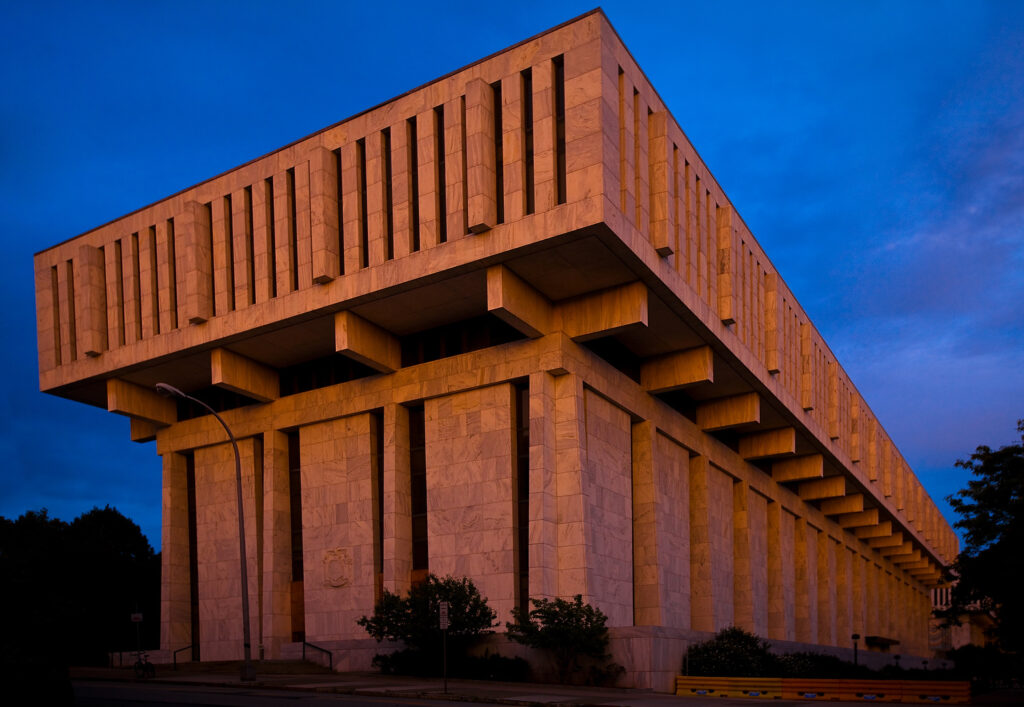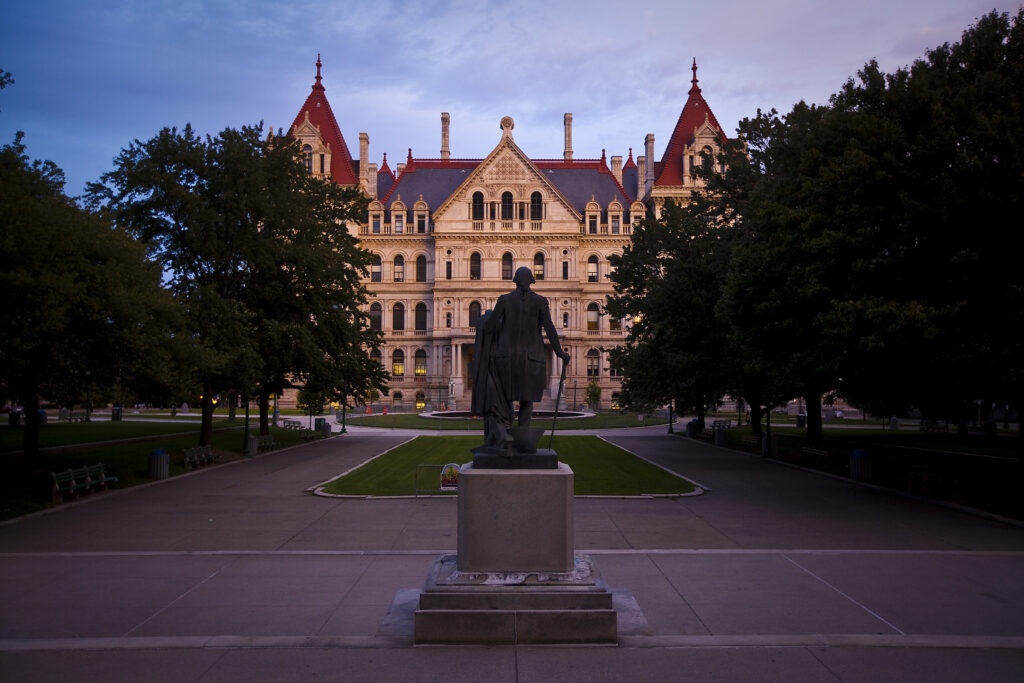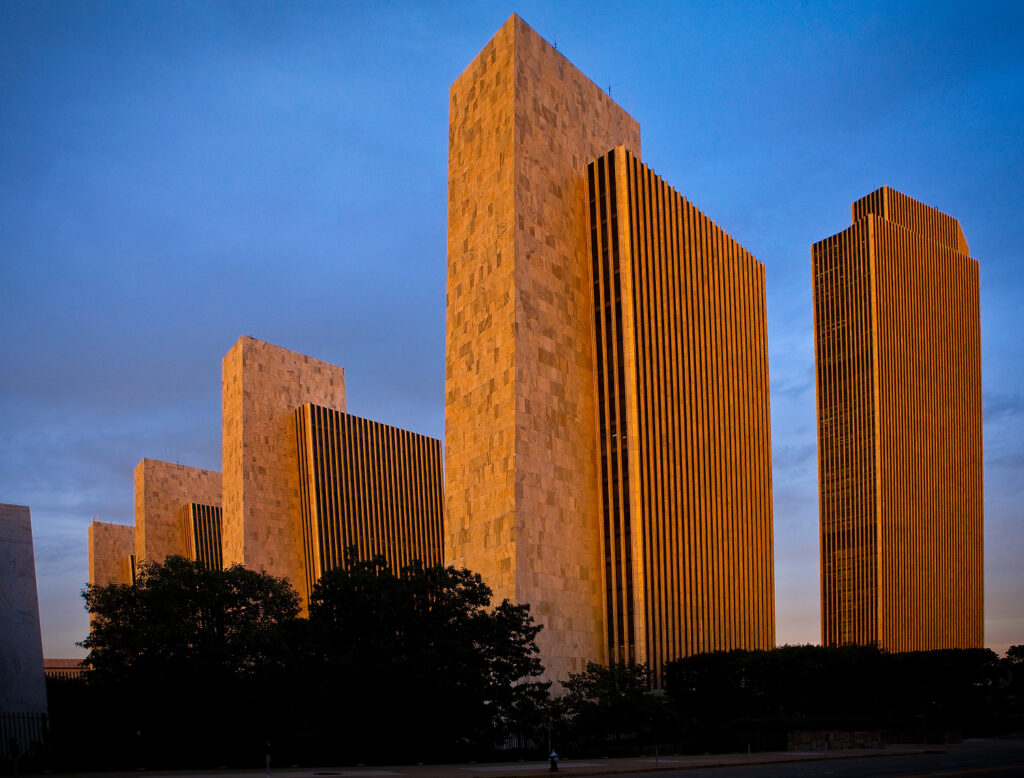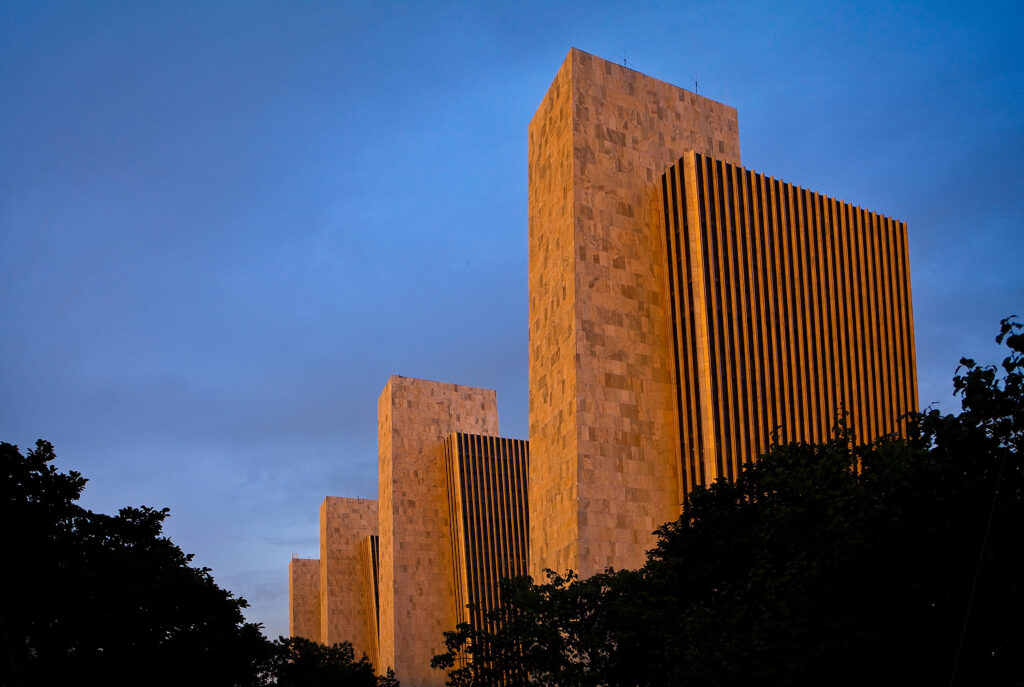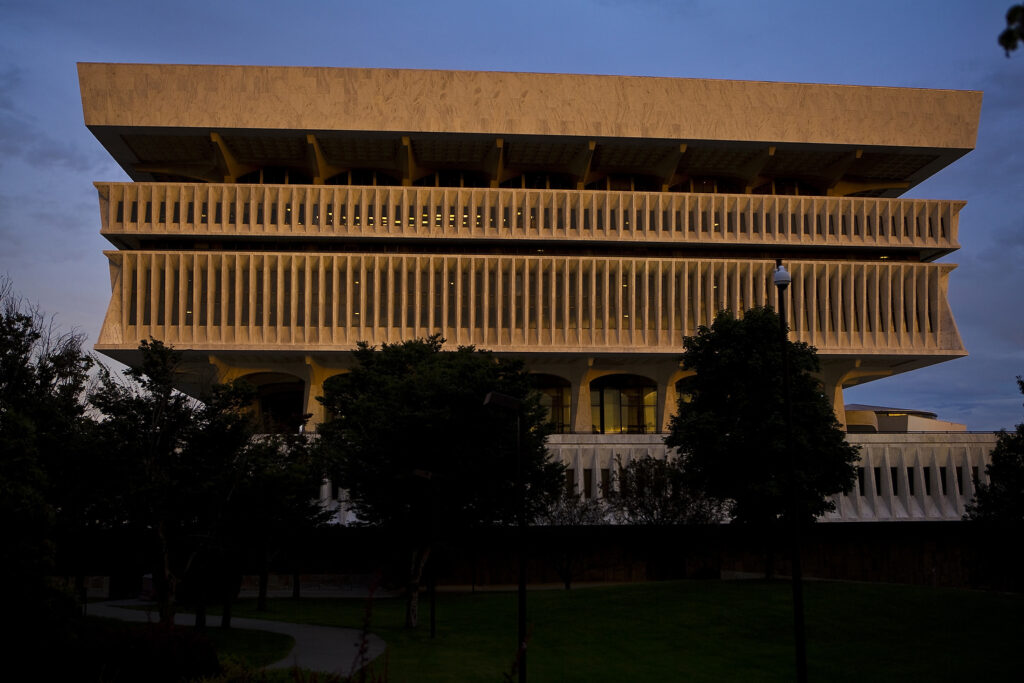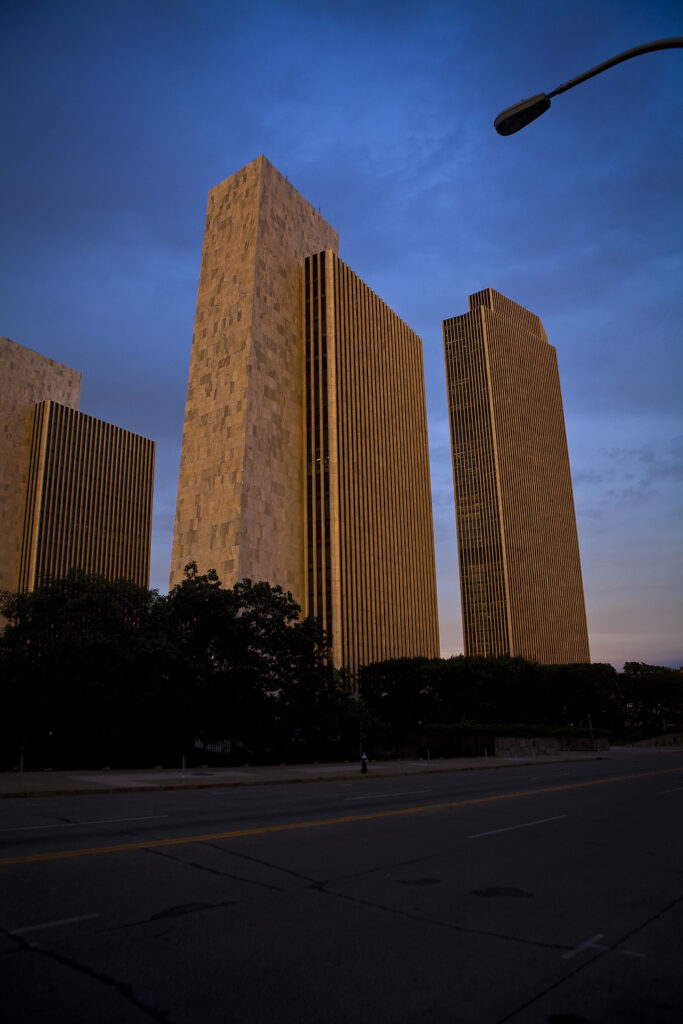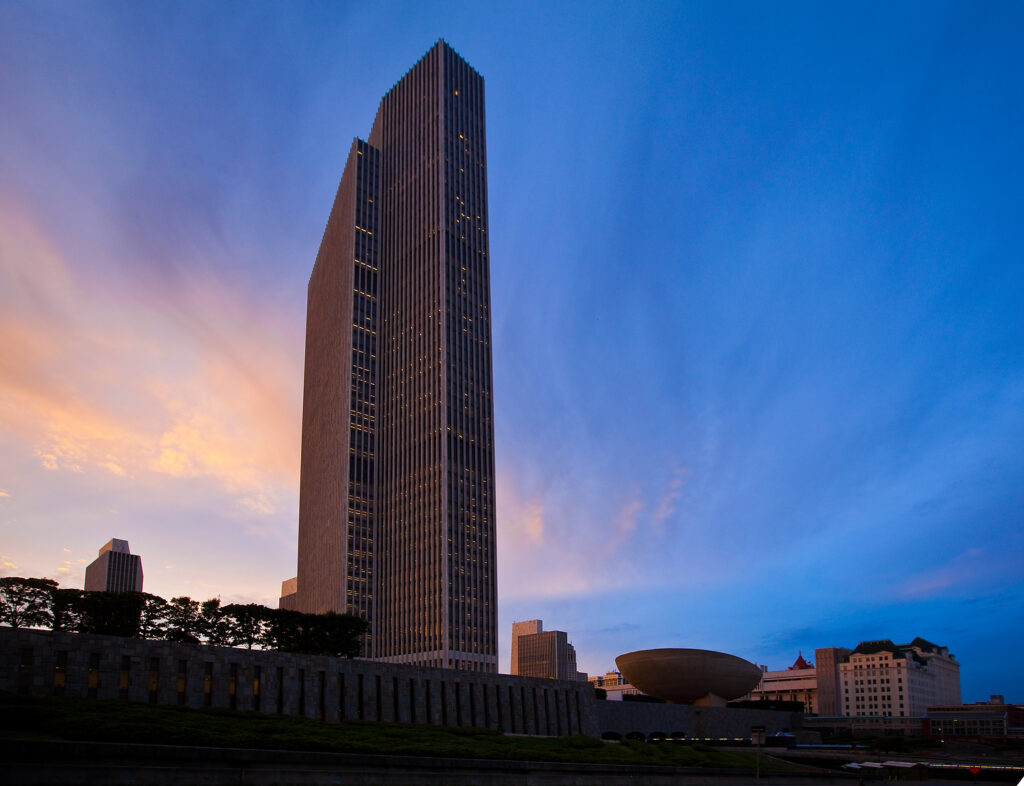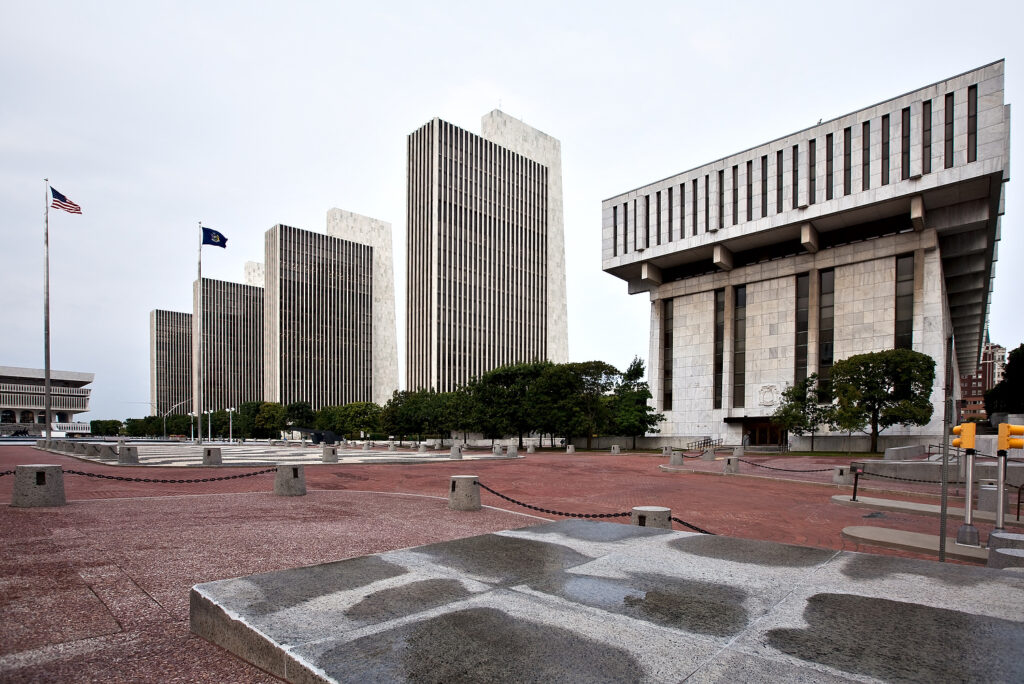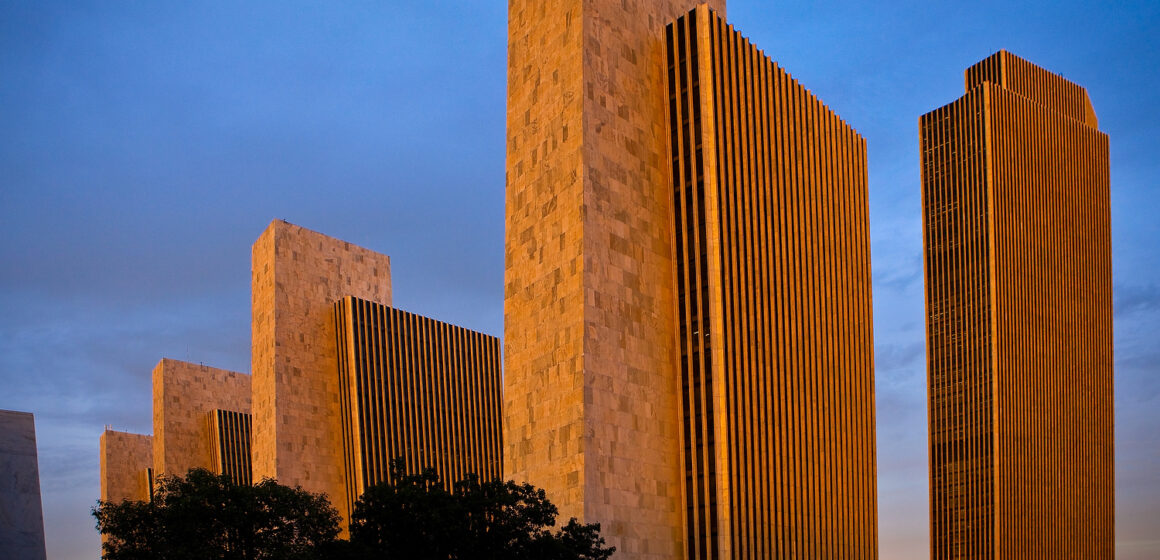As I ventured into the heart of Albany, New York, I found myself standing before a remarkable masterpiece of architectural innovation – the Empire State Plaza. Surrounded by soaring skyscrapers and historic buildings, this concrete jungle stood out, not for its starkness, but for its unique and surprisingly captivating Brutalist design.
It could have been so bad
It is not a hot take to say that brutalist architecture did not ages well.
For instance, Aylesbury Estate in London, UK. Is massive housing complex, built in the 1960s, became known for its imposing concrete towers and interconnected walkways. Over the years, the Aylesbury Estate suffered from social and structural issues, leading to a negative reputation and concerns about safety. Locals have criticized its design for creating isolated and unwelcoming spaces.
Another example is the Morris A. Mechanic Theatre in Baltimore, USA. This theater, with its distinctive Brutalist design featuring textured concrete and geometric patterns, faced criticism for its lack of integration into the surrounding urban fabric. Many locals considered it an eyesore and felt that its design did not contribute positively to the cityscape.
But amidst the prevailing belief that Brutalist architecture has weathered the test of time poorly, the Empire State Plaza defied expectations.
As I walked through the plaza’s expansive open spaces, I was immediately struck by the harmonious blend of raw concrete and geometric shapes. Unlike the often monolithic and imposing Brutalist structures that have earned the style its reputation, the plaza exuded an air of grandeur without overpowering the senses.
The key: thinking it as a whole
The true beauty of the Empire State Plaza lies not just in its architectural form, but in the thoughtful integration of functionality and aesthetics. Government buildings seamlessly coexist with open courtyards, creating an inviting atmosphere that encourages both civic engagement and leisurely strolls. It was evident that the plaza’s design was a careful orchestration to harmonize government functions and public interaction.
One cannot help but marvel at the plaza’s reflection pools, where the surrounding concrete edifices are mirrored in still water, creating a captivating interplay of light and shadow. As the sun dipped below the horizon, the plaza transformed into an enchanting realm, where the juxtaposition of the Brutalist structures against the ethereal evening hues painted a mesmerizing picture.
It became clear that the Empire State Plaza was a testament to the potential of Brutalism when executed with a discerning eye and a commitment to balance. The seemingly unadorned concrete surfaces were adorned with intricate details upon closer inspection, revealing the architects’ dedication to craftsmanship.
Engaging with the local community, I discovered a resounding appreciation for the plaza’s architectural legacy. Many residents expressed admiration for its boldness, recounting fond memories of cultural events and gatherings that had taken place within its austere yet inviting embrace.
In a world where architectural trends evolve rapidly, the Empire State Plaza stands as a compelling example of how Brutalism can transcend its initial reputation. It showcases the enduring allure of an architectural style that, when designed with purpose and executed with finesse, can indeed age gracefully and captivate the hearts of generations to come. As I departed Albany, I carried with me not just the memories of a unique travel experience, but a newfound appreciation for the unexpected allure of Brutalist architecture, as exemplified by the timeless charm of the Empire State Plaza.
